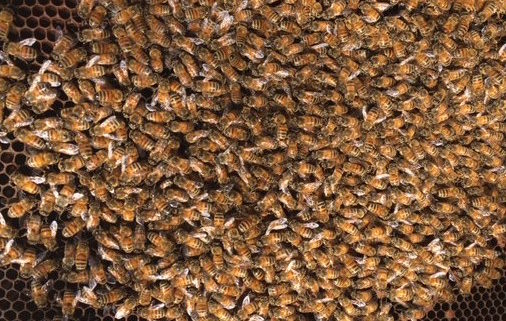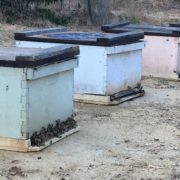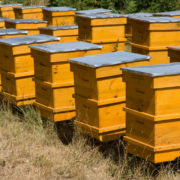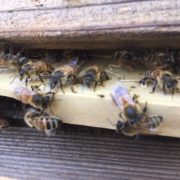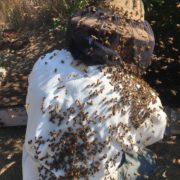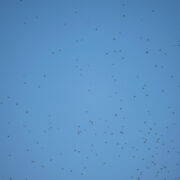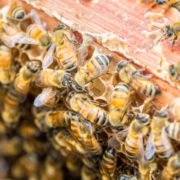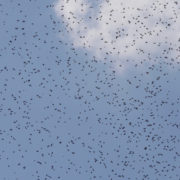The Winter Cluster
Any time the temperature drops to around 57 degrees Fahrenheit, bees in a hive collapse into a cluster. The cluster is a well-defined ball of bees inside the hive. The bees form their cluster around the brood, tightening together to generate and preserve heat. As the temperature warms, the cluster expands; as the temperature cools, the cluster contracts.
Inside the cluster, the bees generate heat for the brood and interior bees. They do this by a sort of shivering alongside the brood. The bees repeatedly contract their powerful wing muscles, which generates warmth. Further inside the cluster, bees continue to attend to their regular activities of eating, rearing brood, feeding the queen and the larvae, and moving about.
As the outside temperature drops, the bees remain in their cluster. Eventually, in the heart of winter the bees inside the cluster will cease rearing brood. While formed in a cluster, bees have little ability to move about the hive freely. They have to stay close to the cluster to stay warm. This is why it is nearly impossible to effectively feed bees with syrup when temperatures drop into the 50’s or below, as the bees cannot break free from the cluster to access the syrup.
This is also why, during times of prolonged cold temperatures, the bees need to have honey stored close to where they are clustering. Colonies have been known to die of starvation even when honey is in their hive, because the honey that was available was located too far away from the clustering bees.
Wildflower Meadows would like to thank all of our friends and customers for a successful 2017.
We wish you all a happy and joyous holiday season!

